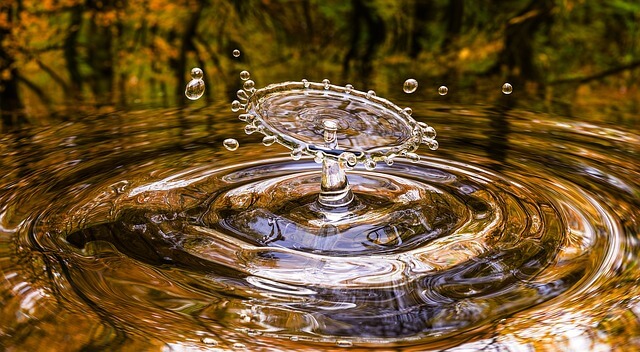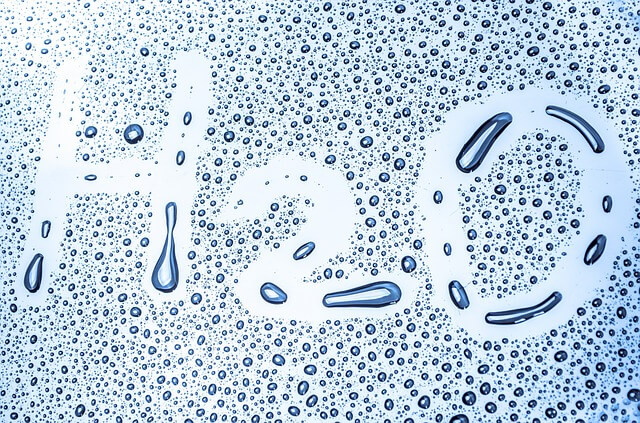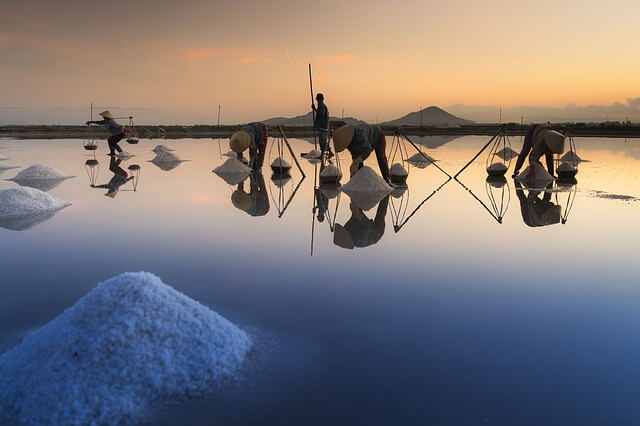Water for us is the most familiar and simple substance. At the same time, there are many mysterious water facts. Scientists still continue exploring the water, finding more and more interesting facts.
If a kid’s school performance suddenly declined, this does not always mean his overwork and tiredness. It can be because of lead contained in water. Excess fluoride may even be cause of diseases of the musculoskeletal system. Therefore, today more or less educated parents explain to their children the following:
– drinking water from under the tap is by no means impossible;
– you can drink only filtered water;
– if there is no filter in the house, then it is necessary to settle tap water during the night in order to make chlorine evaporate from it;
– better not boil water more than once, when boiling again dioxin, a toxic substance that causes cancer, may be released.
The last point seems especially surprising because many people have the habit of boiling water again.
Potable water can be of the first category (table water) and the highest one.
The water of the first category is ordinary purified tap water, as well as extracted from surface sources. Yes. But at the same time, the manufacturer must write on the label that it is “purified tap water”. It softens, removes chlorine, excess iron. At the end of the process, the former tap water is again disinfected and made useful: the manufacturer adds various useful microelements, for example, calcium and magnesium.
Water of the highest category is extracted from underground sources that are the most protected from pollution. Such water should also be safe. But there is an additional criterion – the highest category of water should be useful for our organism. In a scientific language this water should be physiologically full. Compounds of fluorine, iodine, potassium are already present in it or are introduced after disinfection.
Mineral water
Everyone thinks that we can consume natural mineral potable table water in unlimited quantities. But it turns out – it is unhealthy. The EU Directive “About Natural Mineral Water” defines there can be excessive microcomponents in such water, and this may provoke complications. So, do not experiment – especially on children.
Manufacters must indicate the name of the water, its type (first category, highest, etc.), date of manufacture, storage conditions, expiration date, chemical and physical composition of water (content of anions and cations, total salinity, hardness).
Water is a necessary condition for the existence of all living organisms on our planet. “Water is more precious than gold,” thought the Bedouins, who had wandered in the sand all their lives and knew the price of a sip of water. They understood that no wealth would save travelers in the desert if they run out of water.
Water is one of the most vital human needs. Only oxygen is more important, without which life is simply impossible. Without water, a person can live only 2-3 days, but without food you can survive for almost 3 months.
People have to treat water very carefully, because there is not so much water suitable for drinking left on Earth. Despite the fact that water covers 3/4 of the Earth’s surface.
How much do we know about water? Interesting water facts for children and adults
Water is a chemical compound of hydrogen and oxygen (H2O), but it does not exist in its pure form in nature. This is due to the fact that it is a universal extractant and absorbs a lot of different elements or their compounds. Therefore, people use water, which has in its composition and many other various components in addition to hydrogen and oxygen.
A human being can live without water for no more than 2-3 days
Moreover, slight dehydration of the body (about 2% of weight – about 3 lbs or 1.5 kg), leads to unpleasant symptoms: loss of strength, fatigue.
The cause of dehydration can be not only excessive physical activity, but also overeating.
If the human body loses more than 10% of water, it can lead to death.
On average, according to statistics, the organism of animals and plants contains more than 50% of water.
The body of an adult human being contains on average 65-70% water
The human body needs to drink about 0.5 gallon (2 liters) of clean water per day. This is an average figure for an adult, but you need to take into account your weight, level of activity and how warm the weather is. Many people do not comply with the rate of drinking water or drink some kind of drink instead.
When the brain signals a lack of water, you can think that it’s hunger. After drinking it, this feeling passes. That is why now there is a new special diet when you have to drink a lot of water. It is important to drink throughout the day by small sips but you have to do it often. Tea and other beverages shouldn’t be taken in account. It is recommended to drink warm water closer to body temperature.
In Slovenia, there is an unusual lake called Cirknitskoe. Every summer and winter it disappears, and in the autumn and spring period it is filled again.
The composition of the Earth’s mantle contains 10–12 times more water than the oceans.
The world ocean covers about 71% of the planet’s surface, with an average depth of 2, miles (4 km), and contains 97.6% of the world’s known free water reserves.
If all the glaciers melted, the water level on our planet would rise to 210 ft or 64 m (it’s about a 20-story building) and flood about 1/8 of the land surface.
Water is the only substance in nature that is freely found on Earth, the density of which in a solid state is less than in a liquid one. That is why ice does not sink in water, and reservoirs, as a rule, do not freeze to the very bottom (although it is possible at extreme temperatures).
Seawater freezes at – 36 °F (-1.91 ° C)
A human being in one year consumes about 120,000 pounds (60 tons) of water only while eating.
Water sometimes freezes at above zero temperatures.
Water possesses the greatest heat capacity in comparison with the liquids existing in the nature.
There are approximately 1,330 species of water in nature. Scientists distinguish them by their origin (soil, rain, fresh or long-lying snow, etc.), the nature of the substances dissolved in it and their quantity.
The surface tension of water from all liquids existing in nature is inferior only to mercury.
We know about 3 different states of water (liquid, gaseous and solid). Contrary to this opinion, scientists isolated 5 states in liquid form of water and 14 states in solid form of it.
Water is a universal solvent
Approximately 520 thousand cubic kilometers (1,373695e+17 gallons) of water evaporates within a year from the surface of the Earth. Rain and snow bring to Earth about the same amount of water.
Hot water freezes faster than chilled water. If you take two identical containers with water, with hot and cold water, and put them in the freezer, then the container with hot water will freeze faster than cold one, although logically it should be the other way around.
The ocean occupies 3/4 of the entire surface of the Earth, while it is a powerful softener of the Earth’s climate, constantly heating the lower atmospheric layers.
Water is transparent only to visible rays and strongly absorbs infrared radiation.
Water covers about 80% of the Earth’s surface and only 1% of this water is suitable for drinking.
Ice has different temperatures in different parts of the Earth. The coldest ice is in Antarctica (ice temperature is -76 °F or -60 °C). The temperature of the ice in Greenland is only – 18 °F or -28 °C, while the Alpine ice has a temperature of 32 °F or 0 °C.
Glaciers have the most of fresh water.
Water in different states reflects light in its own way. For example, snow reflects about 85% of the sun’s rays, and water reflects only 5% of them.
The tissues of the human body lose water with age. From the calculation of fat free body mass. Infants’ body contains 80.6% of water, adults’ – 75.9%, elderly’s – 65-70%.
The experts explain blue color of clear ocean water by selective absorption and dispersion of light in water.
Polluted groundwater purifies during several millennia
There are more than 135 known isotopic varieties of water. In addition to “living”, “dead”, there is “heavy”, “slippery”, “dry” and “rubber” water.
Science recognizes over 2000 structured forms of water.
Increasing the use of structured water (from 65% to 85%) prolongs the human life of by about 15-20 years, as this stimulates the regeneration of tissues and all functional processes.
Thus, we have shown you various unusual facts about water. Which of them do you like most?








